Software is eating the world. As more businesses develop digital products and services, product development speeds up and competitive advantages shorten. It is critical to understand why customers prefer your product over competitors. Enter product management. This discipline acts as a pivotal bridge between engineering, design, marketing, sales, and customer support. It transcends mere product development, encompassing the entire lifecycle of a product from conception to market delivery and beyond. In the dynamic and often tumultuous landscape of software development, product management ensures that products not only align with business goals but also resonate deeply with customer needs and market trends.
Product owners and product managers are popular roles in the modern enterprise. Stimulated by the adoption of Scrum, and the focus that industry bodies such as DASA put on investing in end-to-end responsible product teams, more and more enterprises are focusing more explicitly than in the past on ‘product thinking’ instead of ‘project thinking’. But thinking of products or following rituals from a framework or method does not automatically lead to business value for your customers or employees. More is needed to build true product excellence. Product Management capability and mindset shouldn’t just be limited to product managers/owners, but should be built and nurtured across the entire team and value stream.
Unfortunately, the state-of-the-practice in digital product management is rather immature. Although many enterprises have invested heavily over the past decade in building high-performance teams, adopting agile frameworks and ways of working, paying off technical debt, and modernizing their IT infrastructure, they struggle greatly with getting product management right.
This struggle is visible on multiple fronts. First of all, many organizations ineffectively use their limited capacity and focus too little on innovation and product improvements. In addition, many organizations have a fairly limited focus on (measuring) customer value. To make things worse, end-to-end value delivery often experiences hampered flow while the product delivery chains face increasing complexity and volatility. Product owners and product managers often do not oversee or fully understand the entire product lifecycle, and are ineffective at best in communicating with cross-functional teams, stakeholders and customers.
It is therefore no surprise that many enterprise leaders are anxiously looking for ways to reach product excellence, and saying goodbye to all these struggles. This, however, is not something you accomplish overnight. Significant investments in processes, knowledge and skills, and the culture of the organization are required. At DASA we guide enterprise leaders throughout their enterprise-wide digital transformations. With respect to building product excellence, we have created a recommended path to consider based on the DASA product management framework. As depicted below, this path consists of 2 phases and a number of subsequent steps.
Phase 1: Create Your First Product Teams
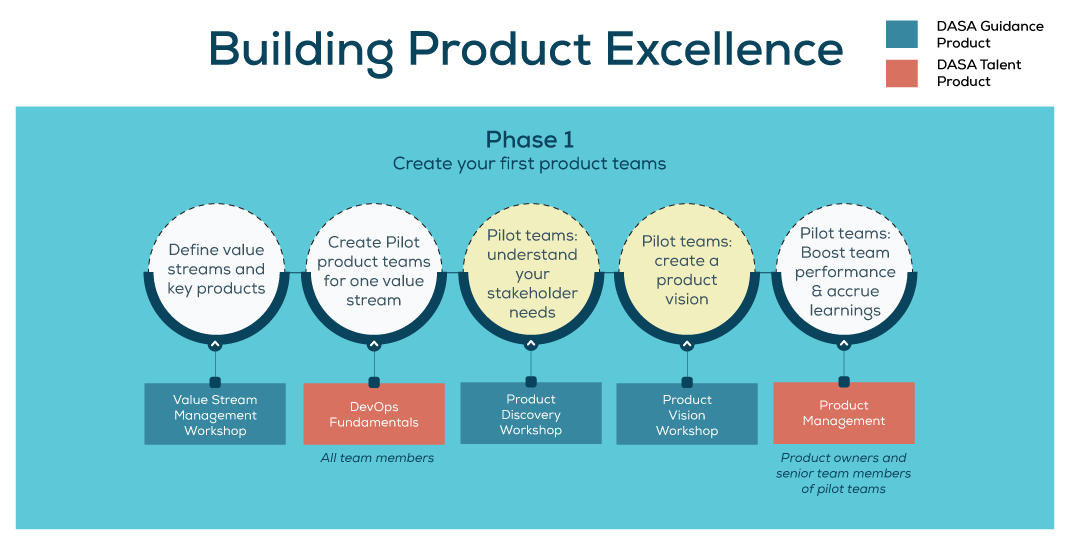
DASA recommends starting small when investing in product management capabilities, thereby adhering to a key principle known within the agile community. Transitioning to a high-performance digital organization is best done in incremental steps. This approach allows for experimentation and optimizes learning without necessitating an enterprise-wide reorganization from the start. It also serves as an excellent method to groom more advocates and evangelists within the organization, who can help to scale the capabilities further later on (see Phase 2).
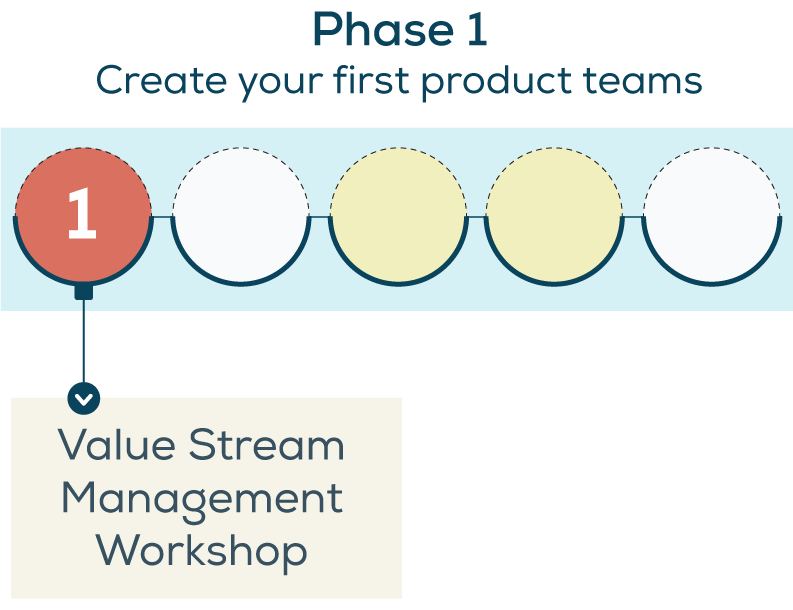
Define Value Streams and Key Products
This phase concentrates on establishing the first end-to-end responsible product teams in an effective manner. We recommend conducting a pilot in which a number of pilot teams (ideally between 5-10) are formed around one selected value stream. The initial step involves defining the key value streams in your organization and the main products that are part of these value streams. It is crucial to understand and define what constitutes ‘products’ in your organization and the value they are expected to deliver before you can begin managing them. To define value streams and key products for each value stream, one could utilise DASA’s value stream management workshop.
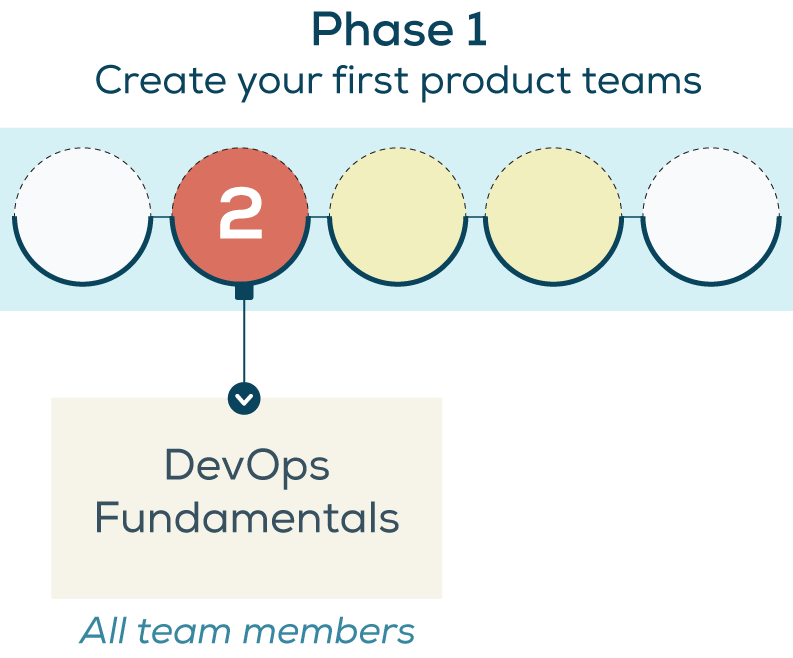
Create Pilot Product Teams for One Value Stream
The second step involves creating the pilot product teams for the selected value stream. We recommend establishing these end-to-end responsible product teams based on the DASA DevOps Principles. To ensure these new teams are effective from the start, building foundational knowledge and skills for all team members through the DASA DevOps Fundamentals program can be extremely beneficial. This program outlines the essential elements required for becoming a high-performance digital organization (HPDO), drawing on principles and practices from DevOps, Agile, and Lean philosophies. These elements are invaluable for the product teams to comprehend and implement as early as possible.
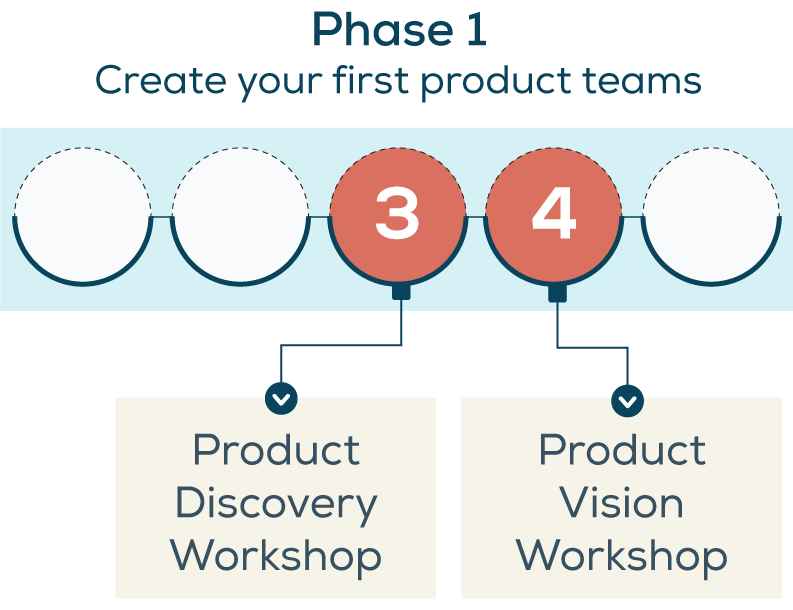
Understand Your Stakeholder Needs and Shape the Product Vision
To assist teams in becoming high-performing product teams, we guide them through understanding their customers’ needs and creating a product vision that explicitly states the value delivered by the product(s). DASA has developed productized workshops for both steps to inspire team members and facilitate this process. The product discovery workshop is centred on identifying and understanding the customers’ needs, exploring potential solutions, and validating these solutions before allocating significant resources to development. In the product vision workshop, participants learn to define a robust product vision that serves as a guiding force for the product development team(s).
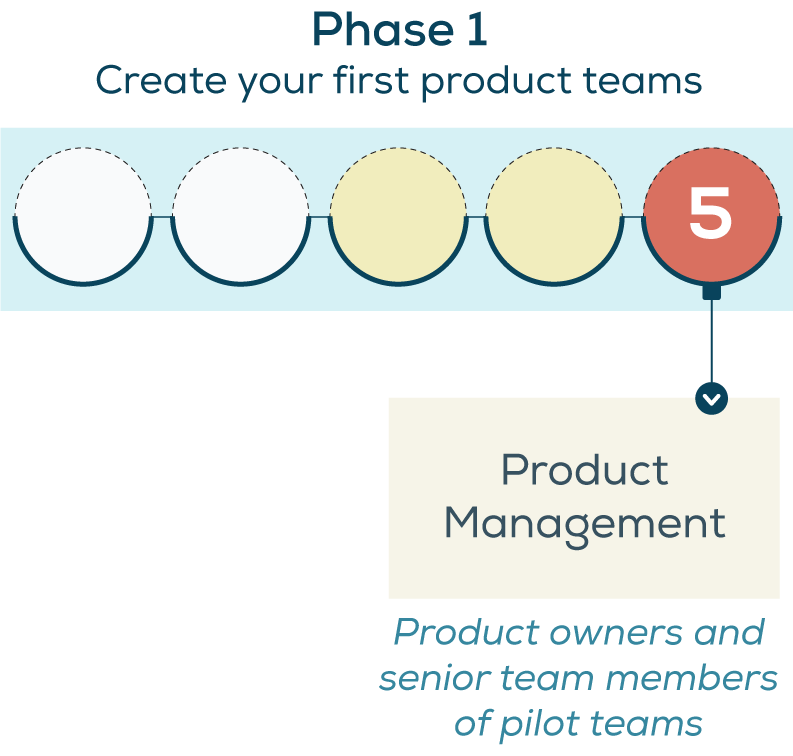
Boost Team Performance and Accrue Learnings
In the final step of this phase, adopting a continuous improvement mindset and encouraging pilot teams to enhance their performance is crucial. It generally takes 3-9 months for a product team to achieve mid-to-high level maturity, so rushing this process is not recommended. Accumulating learnings and fostering knowledge sharing throughout this phase are essential. To support team members, the DASA Product Management certification program is highly recommended for all product leaders (such as product owners and product managers) and senior team members. Expanding ‘product thinking’ beyond these initial teams is advisable to ensure architects, business managers, and staff functions like Finance and HR are well-informed and align their operations with the product teams. The DASA DevOps Fundamentals program, along with tailored workshops or bootcamps, can facilitate this alignment.
In a learning organization, teams can learn from and inspire each other. Leveraging insights and experiences, it’s feasible to construct your own ‘playbook’ for introducing product teams and mastering product management. Such playbooks become invaluable when aiming to scale product management capabilities within your enterprise in the subsequent phase.
Phase 2: Grow an Enterprise-Wide Product Mindset
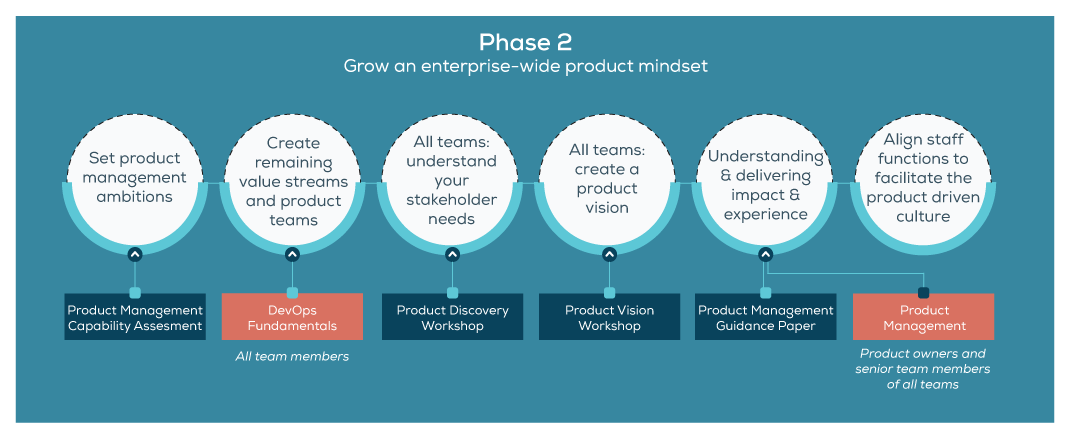
In this phase, the goal is to scale up product management capabilities across the enterprise to achieve true product excellence. During this phase, various components of the DASA Product Management Value Box can be employed to accelerate capability building. This involves guiding leaders and professionals in establishing the right processes, changing behaviors and attitudes, and identifying key areas for improvement within their work context.
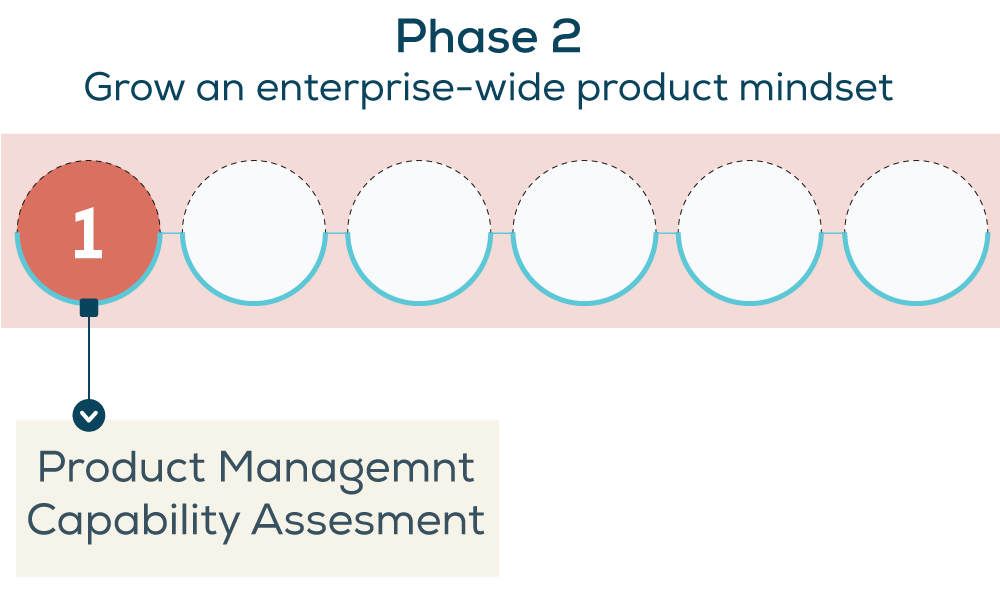
Set Product Management Ambitions
Begin by defining company-wide product management goals. Use the DASA Product Management Capability Assessment to evaluate your current skill level across individual, team, and organizational aspects. Based on this assessment, set targets for development. Leaders should concentrate on creating a strategic framework for product teams and presenting them with key challenges. Teams should use discovery methods to find, test, and create effective features, gradually improving the overall solution for customer problems. This strategy boosts team autonomy, enhances collaboration across product, UX, and technology, and embeds innovation into the main delivery process.
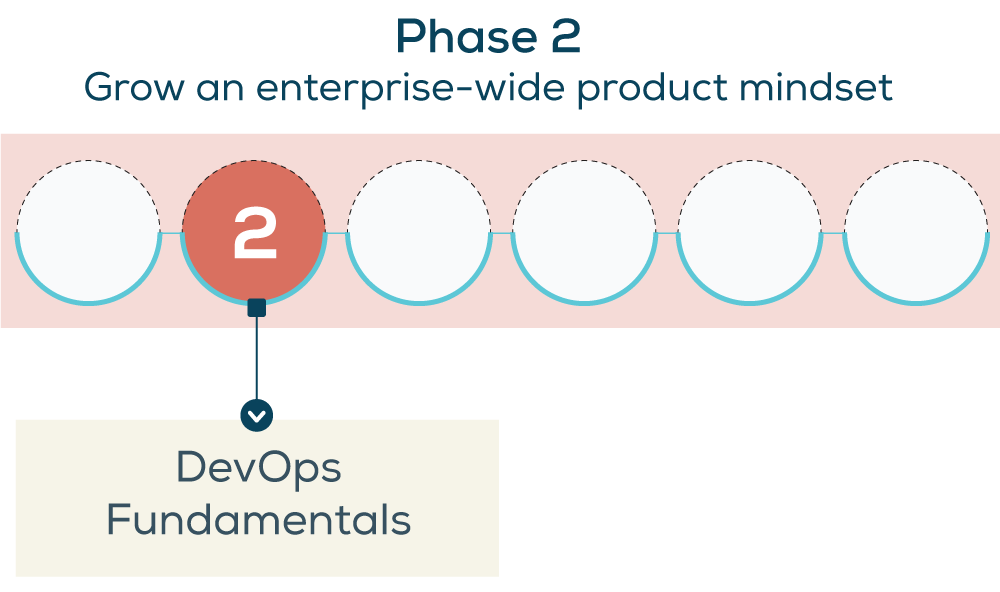
Understand Your Stakeholders’ Needs
Following the establishment of product management ambitions, the second step involves defining the remaining value streams. Cross-functional, end-to-end responsible product teams for these value streams are then established. Similar to phase 1, it is advisable to invest in creating a common frame of reference among team members. One effective method is to utilise the DASA DevOps Fundamentals program for all team members, fostering a unified understanding and approach to product development across the organization.
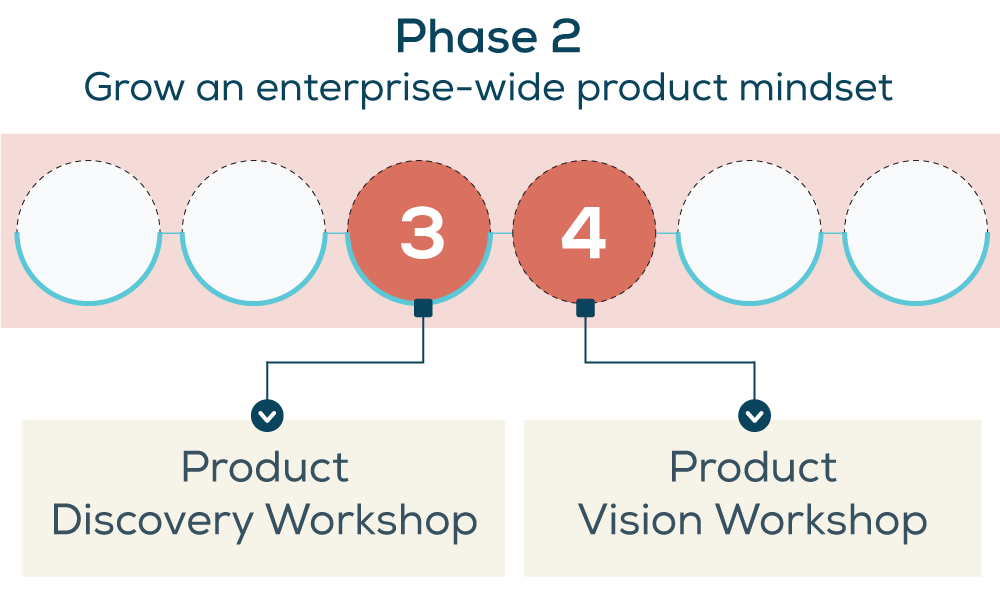
Create a Product Vision per Team
Next, all teams are encouraged to invest time in understanding their stakeholders’ needs and to create a product vision. This vision serves as the foundation for defining a product backlog and roadmap by the product leader. To assist teams in these critical activities, DASA’s Product Discovery Workshop and Product Vision Workshop offer valuable guidance. These workshops provide tangible examples and step-by-step support, enabling teams to effectively navigate the process of aligning their product development efforts with the identified needs of their stakeholders and the strategic objectives of the organization.
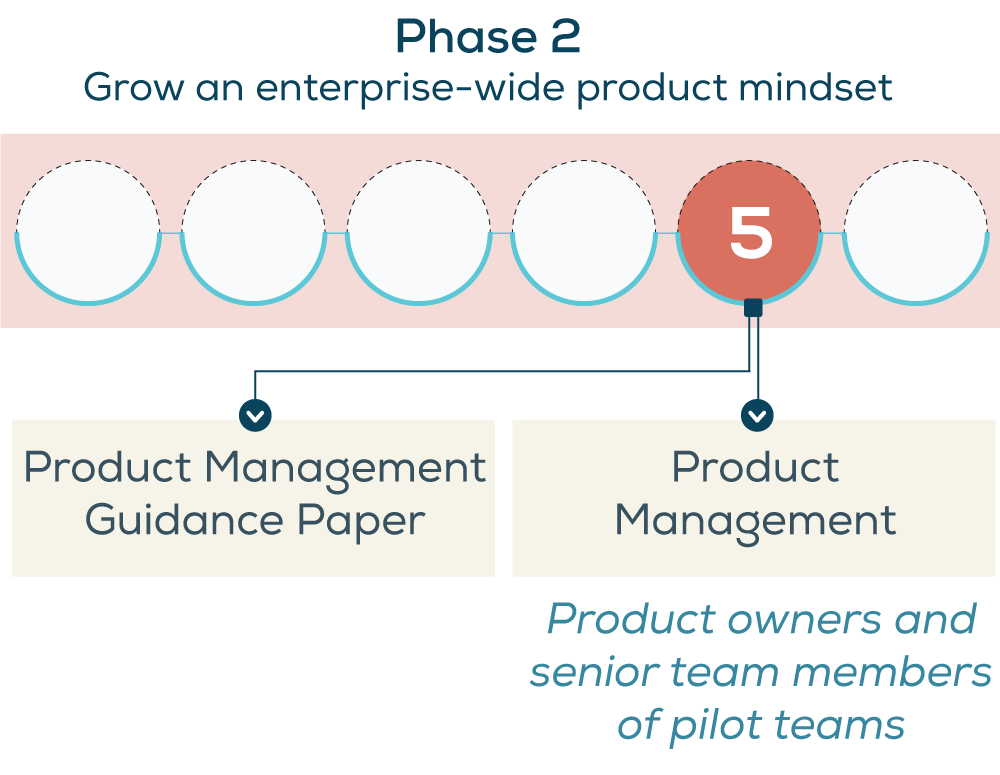
Understanding and Delivering Impact and Experience
Subsequently, ensuring product teams are well-prepared for success is essential, with support provided throughout their journey towards product excellence. This process may require at least 3-9 months, with teams exhibiting varying levels of maturity and experience. To aid in this journey, consulting the Value, Impact & Experience for Product Management Guidance Paper, which concentrates on understanding and delivering impact and experience, is recommended. Enhancing the likelihood of success further, it’s advisable to broaden the understanding of product management’s key concepts and principles among a wider group of employees. Therefore, in a subsequent phase of the transformation, all remaining team members and leaders should participate in the DASA Product Management program. This step aims to ensure a comprehensive grasp of product management across the organization, supporting a unified approach to achieving product excellence.
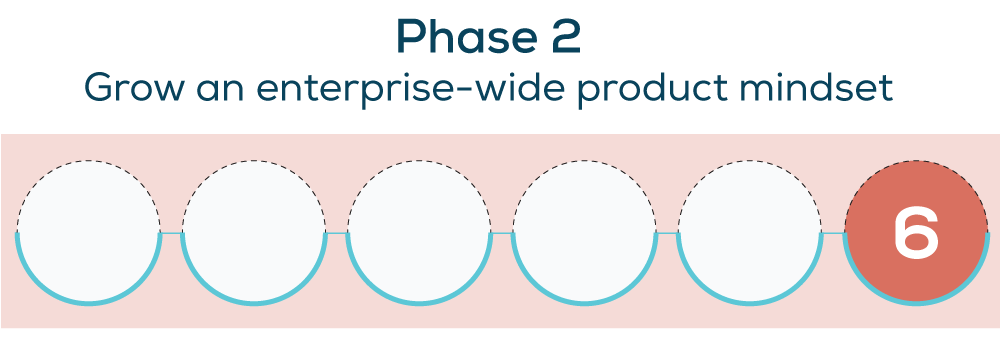
Align Staff Functions to Facilitate the Product Driven Culture
In the final step of this phase, it’s advisable to align as many staff functions within the organization as possible to the value streams and the product teams operating within these streams. Exploring how these staff functions can contribute to the success of the product teams is crucial. For instance, a marketing department could assist teams in promoting new products or features, while a business intelligence division could provide continuous insights to product teams using data science and AI/ML capabilities. The greater the alignment between product teams and these staff functions, the higher the likelihood that the entire enterprise will adopt a true product mindset, with every member of the organization focusing on the same products and the value these products generate. This holistic approach fosters a unified, organization-wide effort towards achieving product excellence.
Throughout the journey, encompassing both Phase 1 and Phase 2, DASA emphasizes the importance of enlisting experienced coaches, specialists, and practitioners to support the product teams. This support ensures that there is a consistent focus on developing new capabilities alongside the ongoing business operations.
Organizations typically manage multiple types of (software) products and often maintain a project portfolio alongside the increasing number of end-to-end responsible product teams. It is crucial to devise an effective strategy for integrating different working methodologies (e.g., projects vs. product teams), cultures, processes, and governance frameworks. This integration falls under the purview of Portfolio Management, an area where DASA also offers various talent development and guidance products. Implementing a strategic approach to Portfolio Management enables organizations to harmonize diverse operational models, thereby enhancing overall efficiency and productivity.

